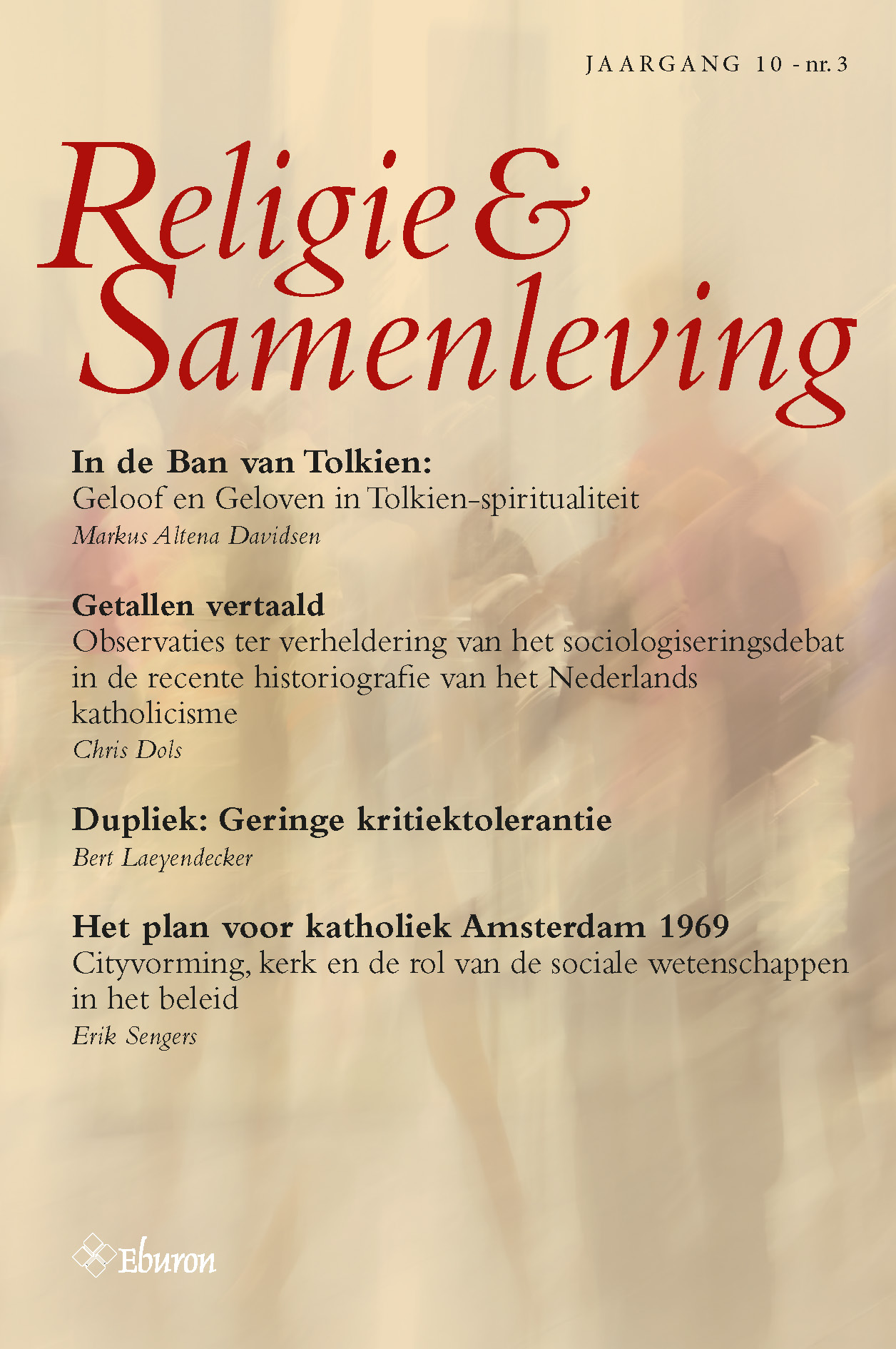In de Ban van Tolkien
Geloof en Geloven in Tolkien-spiritualiteit
DOI:
https://doi.org/10.54195/RS.12238Samenvatting
This article discusses how ‘believing’ works in Tolkien spirituality, a fiction-based religious milieu that uses J. R. R. Tolkien’s narratives, in particular The Lord of the Rings and The Silmarillion, as authoritative texts. Members of this milieu engage in ritual communication with the supernatural beings from Tolkien’s universe, including the elves and the Valar (gods). After presenting the history of Tolkien spirituality and describing the main groups, I develop a model for analysing religious rationalisation. By this term I refer to the process through which theology is developed within religious traditions as a second-order reflection on ritual practices and authoritative narratives. I demonstrate that contrary to what one might expect the strategies of religious rationalisation in Tolkien spirituality are not that different from what we see in other new religions. While one might think that members of fiction-based religions (can) believe only in a cautious and playful manner, practitioners of Tolkien spirituality in fact tend to believe literally and to legitimise their beliefs with supposed proof. It is striking, however, that they tend to believe in a ‘cosmological’ rather than in a ‘historical’ mode, i.e. they believe in the existence of the Valar as spiritual beings, but not in the historical factuality of Tolkien’s narratives. In this sense, Tolkien spirituality may be a good illustration of a broader ‘dehistoricising turn’ in contemporary religion. The development of reflective beliefs in Tolkien spirituality is further shown to be governed by three principles that together seek to reduce tension between conflicting ideas within the tradition and to strike a balance between fabulousness and plausibility. It is suggested that these three principles of belief elaboration govern religious rationalisation also in other religious traditions, at least in traditions with a low level of institutionalisation.




